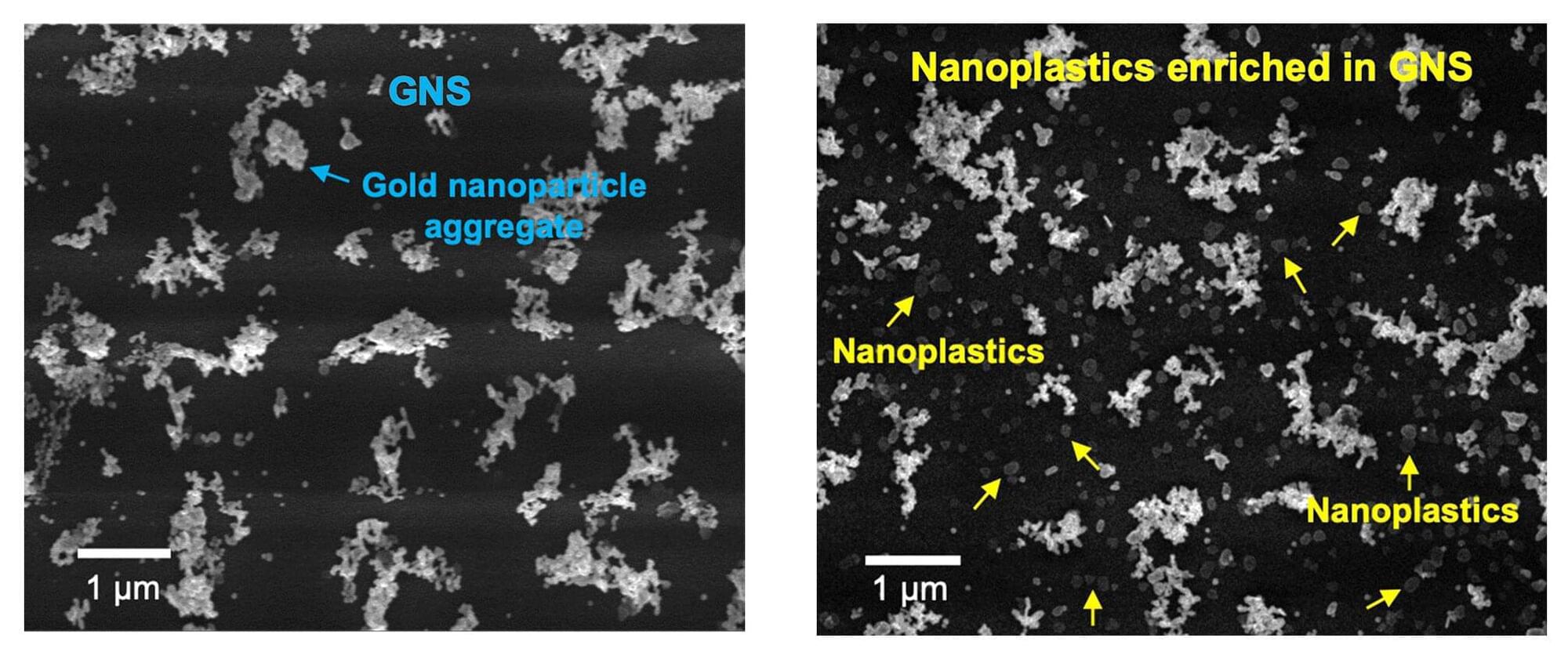While the threat that microplastics pose to human and ecological health has been richly documented and is well known, nanoplastics, which are smaller than one micrometer (1/50th the thickness of an average human hair), are far more reactive, far more mobile and vastly more capable of crossing biological membranes. Yet, because they are so tiny and so mobile, researchers don’t yet have an accurate understanding of just how toxic these particles are.
The first step to understanding the toxicology of nanoplastics is to build a reliable, efficient and flexible tool that can not only quantify their concentration in a given sample, but also analyze which specific plastics that sample contains.
An international team of scientists led by the University of Massachusetts Amherst reports in Nature Water on the development of a new tool, known as the OM-SERS setup, which can do all of these things and can furthermore be used to detect particular nanoplastic concentrations and polymer types in solid samples, such as soils, body tissues and plants.
